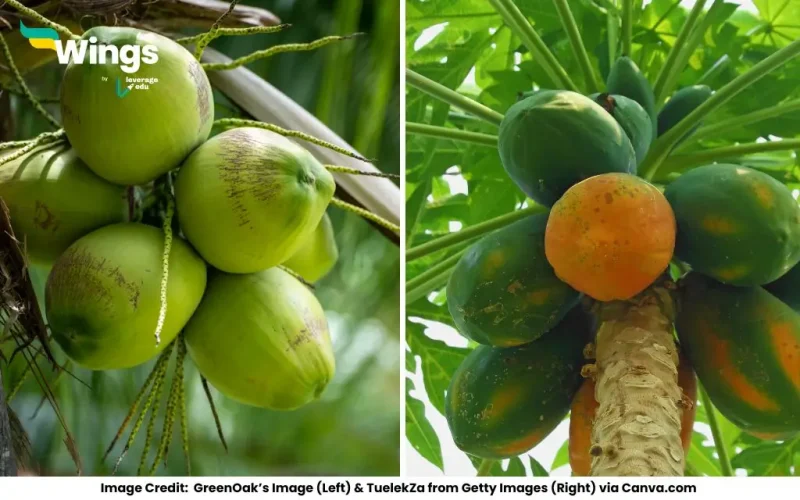In the study of plant reproduction, plants are categorised based on how they bear male and female reproductive structures. The two key terms used to describe plant sexuality are monoecious and dioecious.
1. Monoecious Plants: The term “monoecious” is derived from Greek, meaning “one house.” In monoecious plants, both male and female reproductive organs (staminate and pistillate flowers) are present on the same plant but in different flowers. This allows self-pollination or cross-pollination within the same plant.
Examples: Maize (Zea mays), Coconut (Cocos nucifera), and Pumpkin (Cucurbita).
2. Dioecious Plants: The term “dioecious” comes from Greek, meaning “two houses.” In dioecious plants, male and female flowers are found on separate plants. This prevents self-pollination, ensuring cross-pollination for genetic diversity.
Examples: Date Palm (Phoenix dactylifera), Papaya (Carica papaya), and Asparagus (Asparagus officinalis).
Key Differences Between Monoecious and Dioecious Plants
| Feature | Monoecious Plants | Dioecious Plants |
| Definition | Male and female flowers are present on the same plant. | Male and female flowers are found on separate plants. |
| Pollination Type | Can undergo self-pollination or cross-pollination. | Only cross-pollination occurs. |
| Examples | Maize, Coconut, Pumpkin | Papaya, Date Palm, Asparagus |
| Genetic Variation | Less genetic diversity due to possible self-pollination. | High genetic diversity due to cross-pollination. |
Interesting Facts About Monoecious and Dioecious Plants
- Papaya plants are naturally dioecious, but some commercial varieties have been bred to be hermaphroditic (having both male and female reproductive parts).
- Coconuts, despite being monoecious, mainly rely on cross-pollination due to wind or insect activity.
- Ginkgo biloba, an ancient tree species, is dioecious, meaning male and female trees must be grown together to produce seeds.
Understanding the difference between monoecious and dioecious plants helps in agriculture, horticulture, and plant breeding. Monoecious plants can be self-sufficient in reproduction, whereas dioecious plants rely on separate male and female plants, ensuring genetic diversity.
Common Doubts in Biology
 60,000+ students trusted us with their dreams. Take the first step today!
60,000+ students trusted us with their dreams. Take the first step today!


 One app for all your study abroad needs
One app for all your study abroad needs










